NAMM 2020: Korg gets their Keytar on with the RK-100S 2
At every NAMM some bright spark comes up with another Keytar. Last year it was Yamaha, before than Roland and Alesis, in 2014 it was Korg with the RK-100S. It was the reissue of their Keytar from the 1980s and now it’s time for an update with the RK-100S 2.
RK-100S 2
I have no idea why these things keep coming back. I am not a fan of the widdy synth solo or prancing about on stage pretending I have a guitar. For me this promo video makes me cringe.
You are currently viewing a placeholder content from YouTube. To access the actual content, click the button below. Please note that doing so will share data with third-party providers.
However, many people love these things and I’m sure that’s why you decided to read this article. So I’ll put my disgust aside and give you the details.
The RK-100S 2 is a 3-octave keyboard that you hang around your neck, it has a bunch of sounds onboard and a handle that features modulation possibilities. In version 2 you now get a decent wood grain finish stained black or red. The sounds have been expanded to add more lead solo sounds (oh god) and there are now 200 stage-ready presets covering up-to-date genres to get the party started. You can allocated sounds to the row of buttons for super-quick access. There are two ribbon controllers to get you into some modulation action. One is on the neck for regular mod and pitchbend duties but the other one runs along the length of the keyboard and can be scaled for notes or mapped to any parameter.
And we’re not done yet because there’s also a vocoder function that can plug a headset mic into and become even more of your own performance.
It can be battery powered so you won’t wind yourself up in the power cable when you dance although you’ve still got to contend with the audio cable. Maybe do yourself (and everyone else) a favour by using it only with headphones. This version 2 does look a lot better than the version 1 – I’ll give them that.
Pricing and availability is yet to be announced although the RK-100S retailed for £695.
More information
4 responses to “NAMM 2020: Korg gets their Keytar on with the RK-100S 2”
 1,0 / 5,0 |
1,0 / 5,0 | 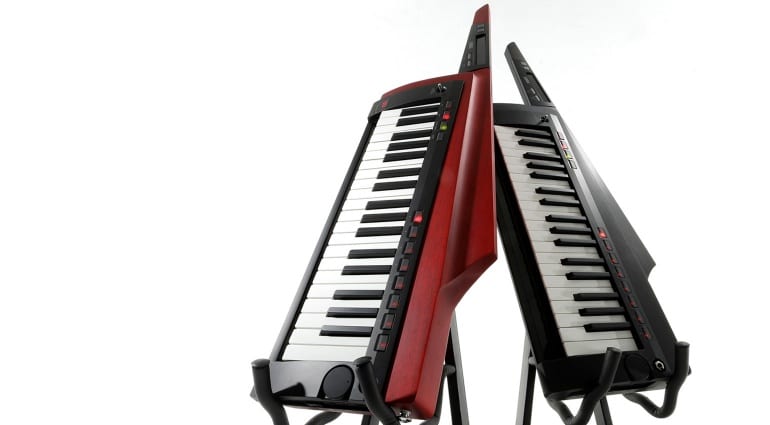

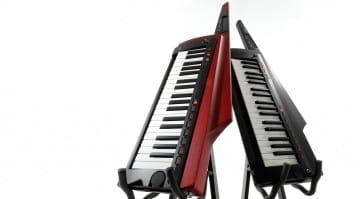

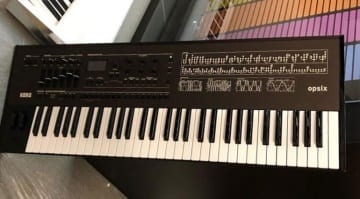
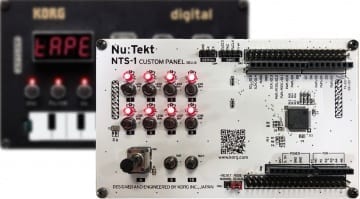
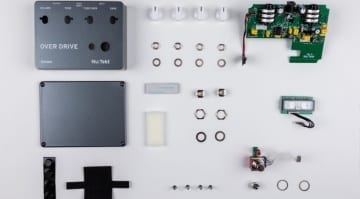
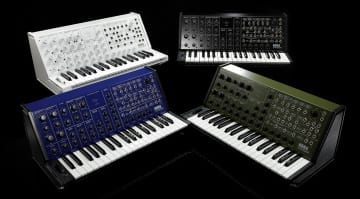

For me, the main power of the keytar comes from having a ribbon in an ergonomic position with your hand in a natural position like a guitarist. I have keyboards with ribbons on the surface, Kurzweil’s, Korg’s etc., but I find them FAR less intuitive to use with my hand tapping down on to them rather than reaching up around like a keytar. Hammer on/offs, trills, finger vibratos, scoops, there are a ton of performance nuances you can get from a keytar that are far more difficult to perform on a ribbon in the usual keyboard bender locations.
And, let’s face it, if guitarists can make ‘prancing about’ look cool, only your own self-consciousness prevents you from doing the same! One of the best things about keytars is that the audience actually SEES you play the notes. From the usual audience perspective on a ‘normal’ keyboard rig, they can’t see your fingers, can’t appreciate the skill and dexterity you are performing, and often fail to connect the music coming out with what YOU are doing. When a guitarist plays, the audience SEES every note, every movement of your fingers, the connection between what they see and what they hear. A keytar allows the keyboard player that same degree of connection.
Maybe if you want to learn how cool keytars can get, don’t think Jimmy Jam and Terry Lewis… go back and watch Jan Hammer doing incredible solos and duets with Mahivishnu’s John McLaughlin. Would his keytar solos get as much attention and appreciation if they had been performed by simply one more regular keyboard synth buried in with all the other ones?
I don’t think so!
”I have no idea why these things keep coming back”
The answer to your opening is ‘by popular demand’. Outside of the western market especially – there is a huge passion for Keytar. Nothing quite lays it down like the 100s because what some feel it ‘lacks’ under the hood; is made up for by what the other commentator correctly says: Ergonomics.
There are far too many iterations of this platform that tote impressive features; but are hard to fully capture or utilize. I think of the Edge and how, it almost does feel as if I’ve picked up my 88 key synth and slung it on my back. Which very much defeats the point.
For the reach, the playability, the programmability, the ribbon combination and the weight. It gets everything we actually want right. And yes, when it can’t quite produce what I need – I am back at my workstation. But that would overlook the sheer value of picking the right tool for the job and using it in that vein. Which many of us do and have been looking forward to being able to buy again.
So coming full circle, the reason you see it come around again and again; is because it sells. Because we love it and how versatile it is. But most of all, because is hella fun! Get out and play with it. For a smile and a song, very few instruments I own come close.
You make it sound as if they haven’t changed since the 80s, Why make an article about something you’re not only bias against but know little about? Guitars are quite overrated and copying them is the last thing on my mind while playing, we simply beat them at their own game. And this is coming from someone who’s played guitar for around 4 or 5 years. If you were mentioning outdated keytars I could understand but this is a quality korg instrument for dedicated musicians. This may seem like a strong reaction but, uninformed people are the reason this instrument doesn’t become wildly popular, the capabilities of it is huge.
The reason they aren’t “wildly popular” is they turn keyboard players into performing monkeys, which most are too way cool for. Leave it to us guitarists to look simian on stage. Everyone knows only Brett Domino can pull off looking cool with a keytar!
https://www.youtube.com/watch?v=vF1fDb54Uik